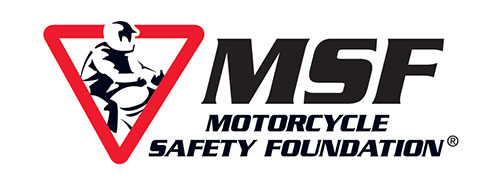American Motorcyclist July 2018
Ask The MSF
Tire Pressure Tips
 Q: Should I stick with the tire pressure recommended in the owner’s manual? Should I go by the maximum pressure listed on the sidewall?
Q: Should I stick with the tire pressure recommended in the owner’s manual? Should I go by the maximum pressure listed on the sidewall?
A: Check the air pressure with a gauge when the tires are cold (at least three hours after the last ride), as part of your pre-ride inspection, and adjust it according to your motorcycle owner’s manual or the tire information label on the chain guard, frame or swingarm.
There may be two sets of recommendations for tire pressure: one for solo riding and one for riding with a passenger and/or cargo.
Never exceed the maximum inflation pressure listed on the tire’s sidewall. And never exceed the motorcycle’s or tire’s load limit (combined weight of operator, passenger, cargo and accessories), since that can cause tire failure.
Some riders reduce the frequency of tire pressure checks to once a week and before long trips, and perform only a visual inspection for surface conditions before each ride. However, be aware that it is impossible to determine proper inflation by appearance alone. An accurate pressure gauge is needed, unless your motorcycle is equipped with a tire pressure monitoring system that gives a specific pressure readout.
Proper tire pressure is critical for optimal bike handling and maximum tire life. Under-inflation or overloading can cause heavy steering, irregular wear, internal damage due to over-flexing and tire separation from the rim. Over-inflation can reduce the contact area (and available traction) and can make the motorcycle react harshly to bumps.
Safe riding depends on selecting the right tires, inspecting and maintaining them and replacing them. For more details, see the Motorcycle Industry Council’s Tire Guide at msf-usa.org.
